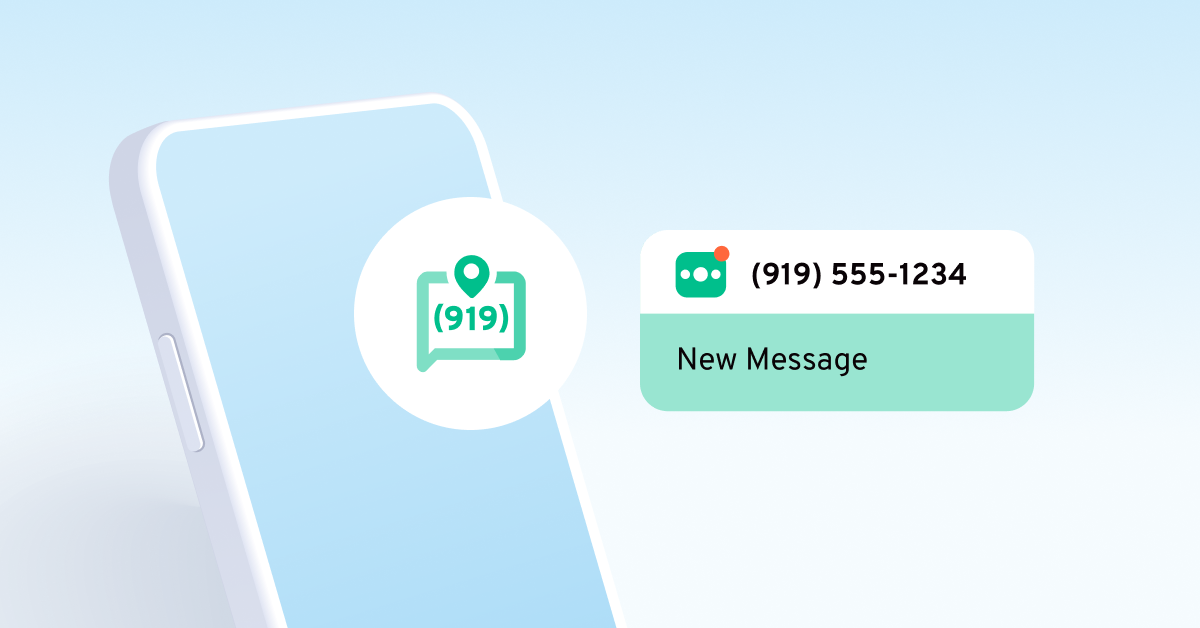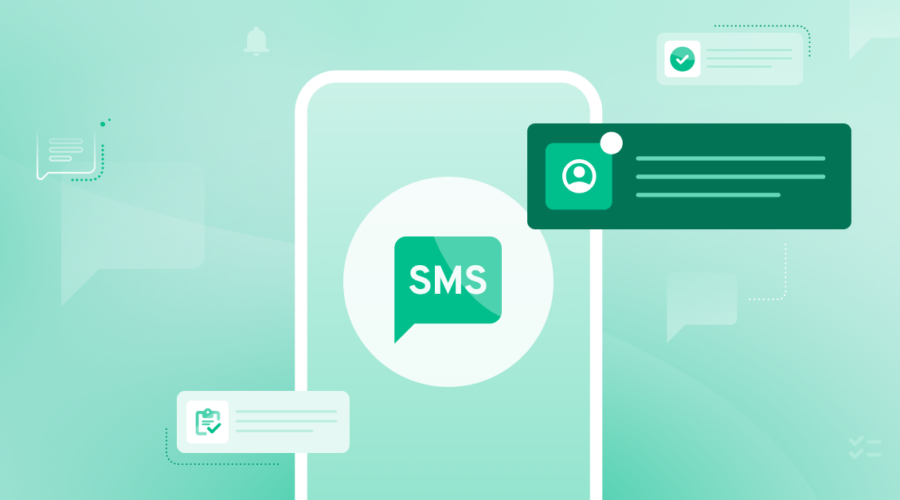Consumers receiving text messages from local businesses has risen dramatically the past few years and it makes sense—if you have a local phone number that is already known to your consumer, why not use it to send messages?
But the argument over what businesses can and should do via text messaging is getting interesting. We want to keep text messaging as a wanted channel free of spam and unsolicited texts, while businesses know that there is no faster way to get consumer attention than via SMS right to their phone.
Commercial or business messaging is known as application-to-person messaging, or A2P, and can be done through short codes, toll-free numbers, or even local numbers, known as 10DLC.
We know there’s been a lot of talk around 10DLC throughout the industry over the past few months, and you’re looking for guidance and clarity about what’s coming down the road. Here’s the thing: We don’t have all of the answers yet. The 10DLC space is rapidly changing and the details are still in flux.
A brief history of 10DLC
The North American SMS/MMS market has gone through a radical shift in both regulatory and pricing changes over the last 2 years.
In December 2018, the FCC declared text messaging an information service, allowing wireless carriers to set their own rules, pricing, and policies without being subjected to all of the same regulatory burdens that apply to telecommunications and commercial mobile services.
In addition, as of July 2019, the CTIA released updated guidelines which included updated, detailed definitions of P2P and A2P traffic. Based on these definitions, the majority of Bandwidth’s traffic is classified as A2P. The result:
- These changes have caused significant volatility in North America as new A2P programs come online.
- Throughout 2019, Canadian wireless carriers began implementing surcharges for both local and toll-free messaging (and have adjusted the rates often since).
- In early 2020, Verizon Wireless launched their 10DLC program (and the surcharges that came with it). Currently, we are awaiting finalized plans from AT&T and T-Mobile around their 10DLC programs.
- Finally, in August 2020, Verizon Wireless announced that they would begin implementing a surcharge on toll-free SMS traffic as well.
Throughout 2020, carriers have been preparing to launch their 10DLC routes. While we don’t have any specific dates or actions for you to take right now, we wanted to give you an idea of what to expect when the time comes.
The launch of these new 10DLC programs will involve some new registration processes, including brand and campaign registration, and the provisioning of these campaigns to your local telephone numbers.
At the end of the day, this will allow you to send sanctioned traffic over local numbers at higher volumes than have been possible in the past, providing you and your customers with the ability to utilize 10-digit numbers for legitimate A2P traffic when locality is important.
10DLC FAQs
Despite the uncertainties, 10DLC for commercial messaging is definitely happening and it’s hanging other forms of messaging, like shared short codes, out to dry.
With the launch of 10DLC across all carriers, shared short codes will be actively banned and new solutions will need to be found for those utilizing them. So let’s start answering some questions.
I’ve heard multiple dates, like November 1st and January… what’s the real date?
We know dates have been published by other providers, but the reality is that there is no finalized date. Carriers have given us estimates, but these are not 100% certain. In order to avoid taking action before the right action is decided upon, we’re waiting until dates are finalized.
Our best guess: early 2021.
What about pricing? I saw rates…
At the risk of sounding repetitive, yes, we know pricing has been published by other providers, but the reality is that rates are not finalized. We don’t want to set incorrect expectations if or when those rates change.
Will I get increased throughput?
Currently, local SMS (with the exception of messages destined for VZW, whose 10DLC route went live earlier this year) can only be sent at 1MPS. When AT&T and T-Mobile go live, according to the MPS you are assigned based on your campaign’s assigned trust score, you will likely be able to begin sending at a higher throughput over local numbers.
How will I register my campaigns?
We’re building out a self-service campaign submission and management platform and API that will provide you with the ability to register your brands and campaigns, as well as provision your local numbers straight from the dashboard.
What’s involved in registering a toll-free campaign?
10DLC campaigns are quick and painless. You’ll register the brands of your message senders and then you will register their corresponding campaigns. You’ll submit information regarding the use case for the campaign, answer a few compliance questions, submit a sample message or two, and you’ll be on your way.
Under most circumstances, campaign IDs will be generated instantly and you’ll be able to provision your campaign ID to local numbers in your account right away. Some special use cases (such as non-profit) may require additional external vetting, which will take a bit longer to get up and running.
Are there any surcharges?
There will be additional surcharges applied to your messages sent over these 10DLC routes. The exact amounts have not been confirmed by carriers yet, but they may vary based on a campaign’s use case.
What can I do today?
Not much… yet. We are working diligently to develop a solution that will make this new process easy for you and your customers, adjusting the plan to new information as we hear it. We’ll continue to keep you informed and guide you through any new processes that will come your way.
Toll-free and dedicated Short Codes are still great options and as of now, there are no changes announced for either of those channels. Please don’t hesitate to reach out to your Account Manager to get a better understanding of the industry changes coming your way.





